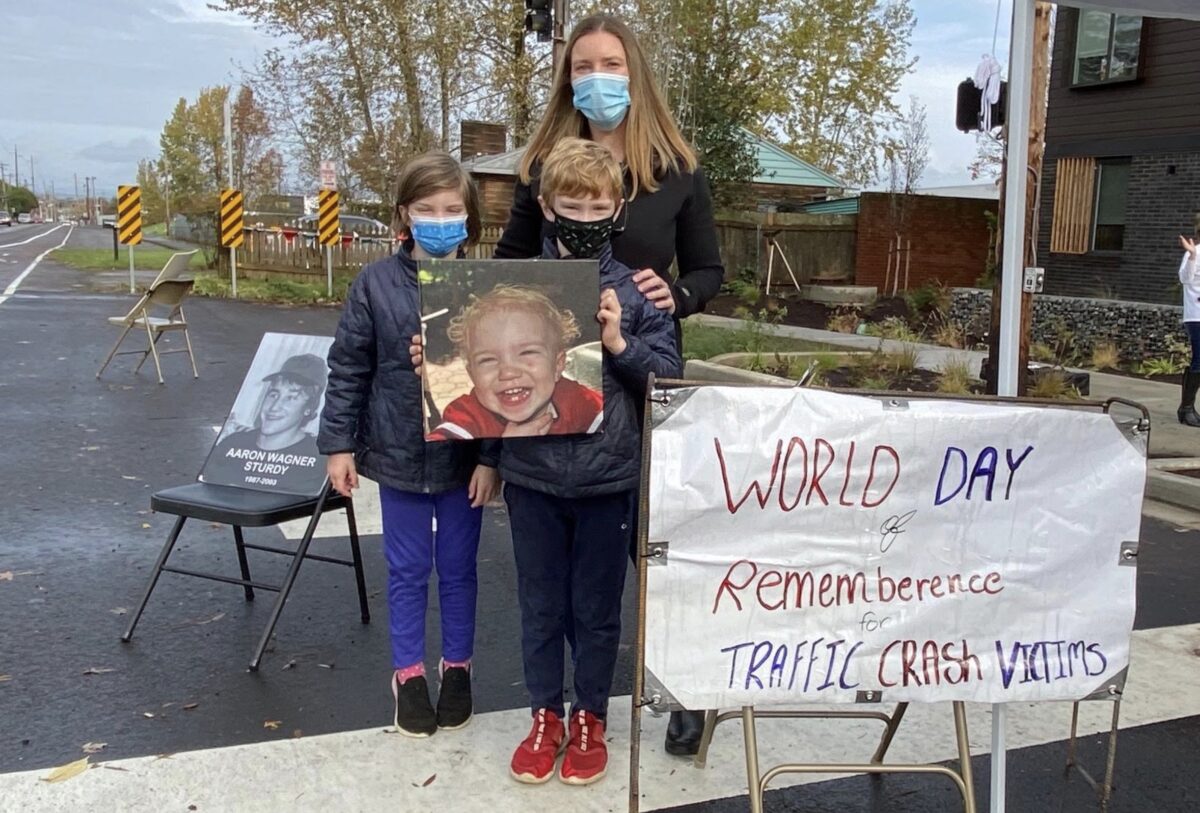
(Photo: Oregon Walks)
Courageous family members of traffic crash victims stood at a deadly Gresham intersection Sunday to implore people to stop driving recklessly and raise awareness of road safety.
Portland-based nonprofit Oregon Walks hosted the event with members of the Oregon/SW Washington chapter of Families for Safe Streets as part of the World Day of Remembrance for Traffic Crash Victims. The event location — SE Hogan Road and SE 5th St — is where Luis Medina, an 11-year-old student was struck and killed by a driver as he was walking to school on January 6, 2020. Two weeks earlier, 17-year-old Jayden Auberry was struck and killed while bicycling just one block away.
The event was covered by KATU and KOIN.
Advertisement
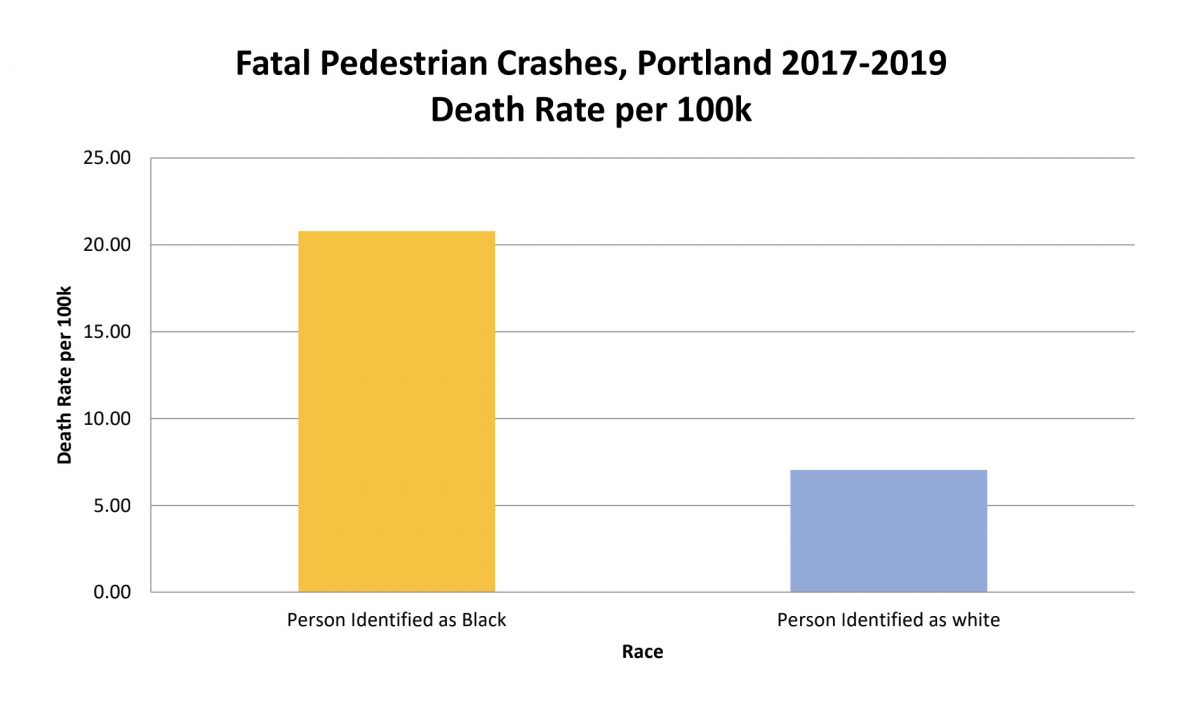
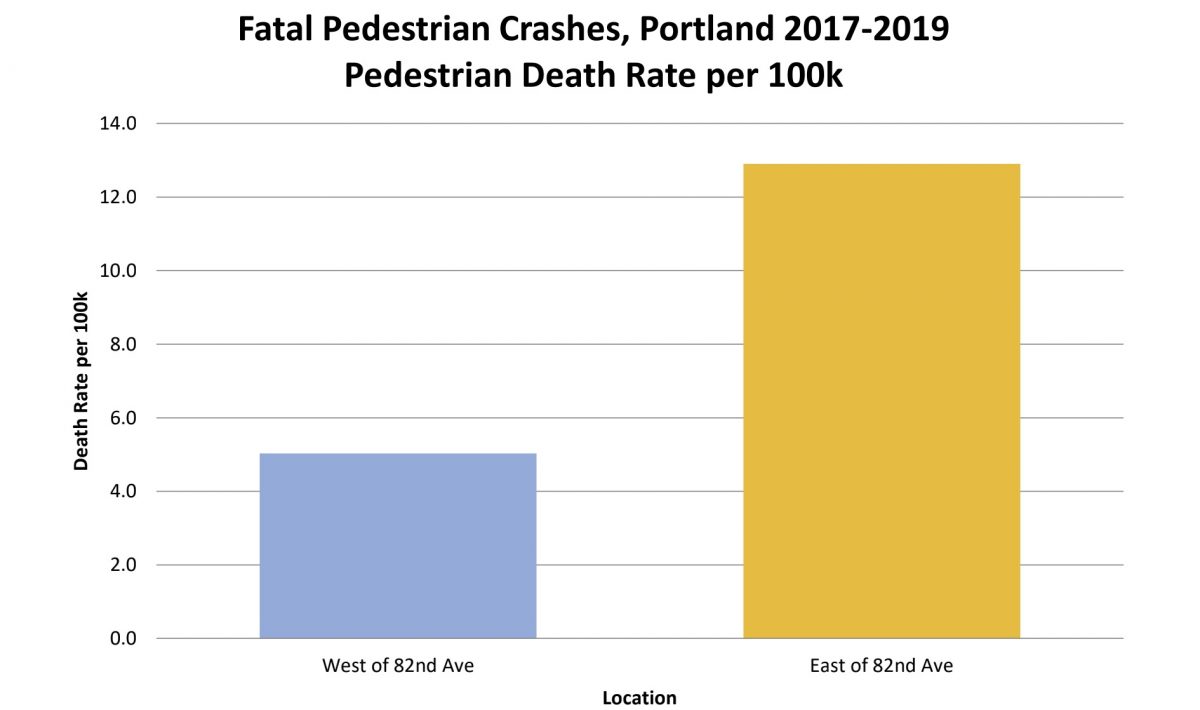
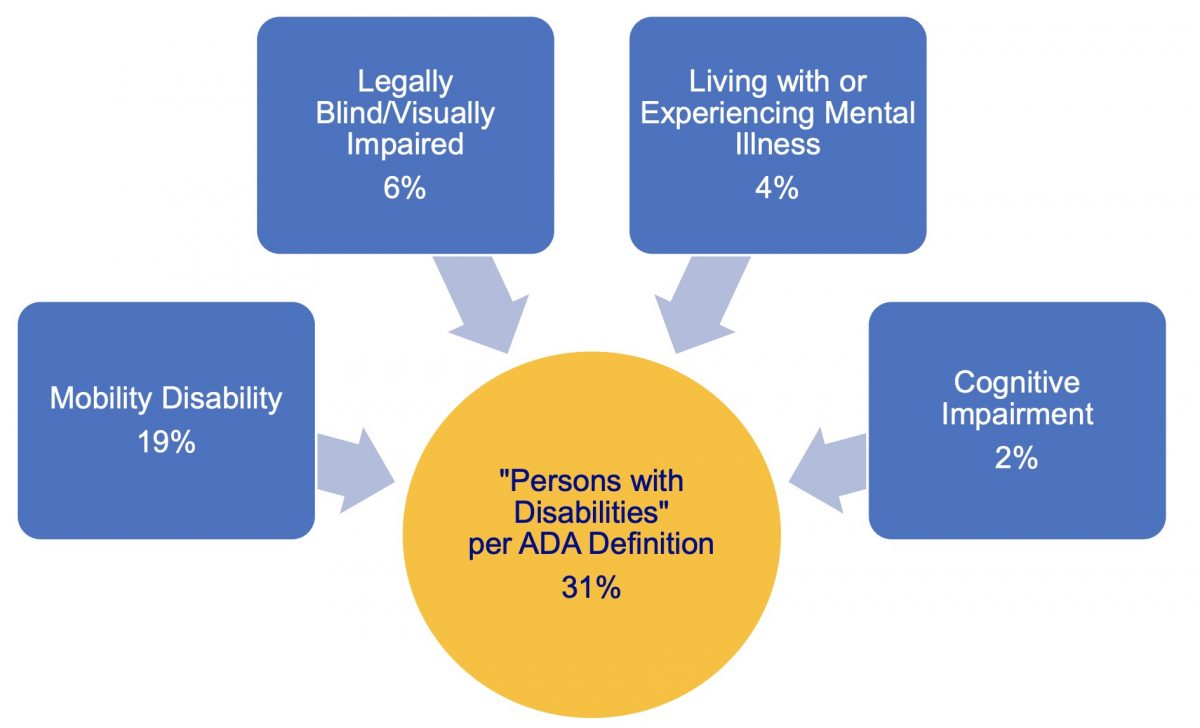
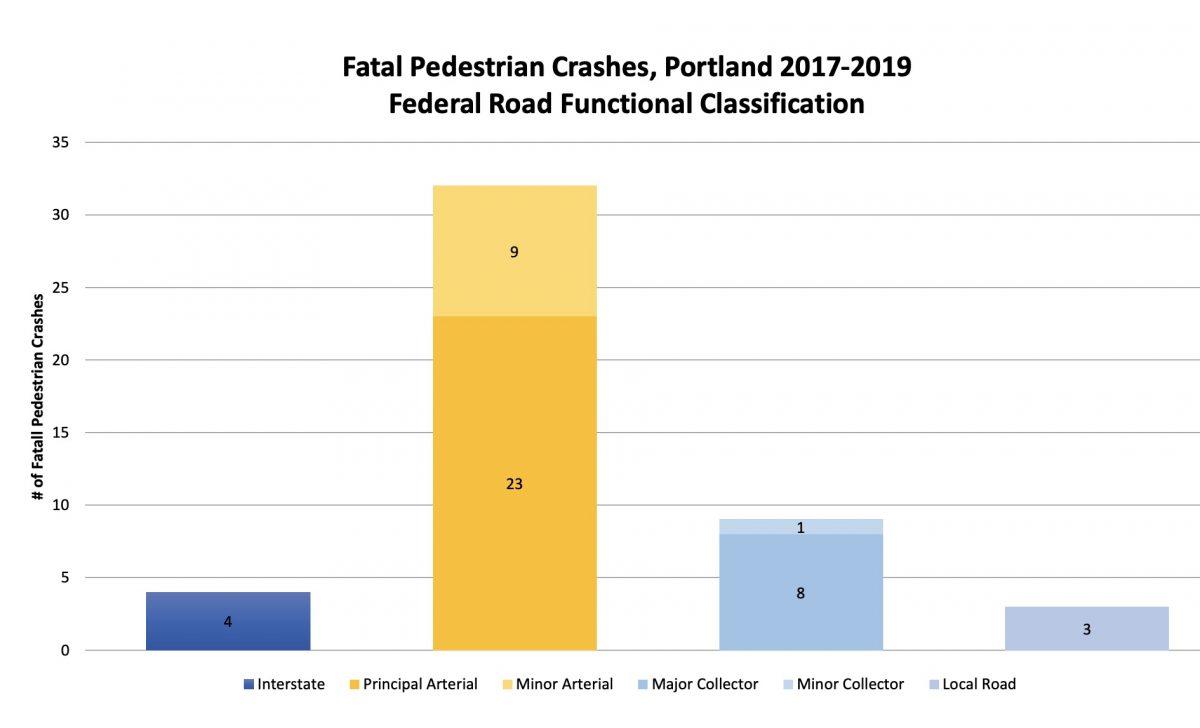
Oregon Walks Board Member and Portland-based lawyer and traffic law expert Scott Kocher was also at the event. He released initial findings from an analysis of fatal pedestrian crashes in Portland. Kocher and a crew of volunteers and road safety experts have gathered and reviewed data from 48 fatal pedestrian crashes between 2017 and 2019. With analysis of police reports, road user behavior, and street designs, Kocher says it will be, “The most comprehensive look at pedestrian crashes by safety advocates in Portland’s history.”
One of the key takeaways is that, “Pedestrian deaths in Portland are an equity issue disproportionately affecting underserved areas and populations including people of color, older adults, persons with disabilities and people experiencing homelessness”.
Here’s more from a preview of the findings (emphases mine):
• All of the 48 fatal pedestrian crashes in Portland during this three-year period (2017-2019) occurred in areas where the median income was below the citywide median income of $68,676.
• The fatal pedestrian crash death rate in the underserved area of East Portland (east of 82nd Ave.) is over twice that of the rest of the city.
• Police reports include data about crash victims, including race. Based on that data for Portland, people identified as black are nearly three times more likely to be killed in pedestrian crashes compared to other groups.
• The death rate from pedestrian crashes for older adults (65+) is over 3 times that of the rest of the population.
Advertisement
• A disproportionately high 31% of pedestrians killed in crashes from 2017 to 2019 were “disabled” according to the ADA definition. 12% of the Portland population meets this definition.
• 21% of those killed as pedestrians were experiencing homelessness. According to different estimates, between 0.5% and 2% of the Portland population is experiencing homelessness.
Inadequate Street Lighting is a Major Issue in Portland
• 79% of the 48 fatal pedestrian crashes reviewed occurred when it was dark.
• Reviewers identified possible inadequacies with the street lighting at 58% of the locations where fatal crashes occurred during darkness. Additional review is in progress.
• Street lights were completely absent on one whole side of the street at 12 out of 22 locations where the worst lighting concerns were identified. These were wide streets (>48’) where lighting on one side is inadequate.
• Inadequate street lighting is an equity issue: The 2019 “PedPDX: Walking While Black” pedestrian survey by the Portland Bureau of Transportation revealed “Poor Lighting” to be the #1 concern among Black Portlanders. All crashes (2017-2019) that killed pedestrians who were identified as Black occurred when it was dark. Reviewers identified inadequate street lighting in all but one of these crashes.
• 77% of fatal pedestrian crash locations where reviewers identified potentially inadequate street lighting were located in East Portland.
Contributing Crash Factors
• Lack of Traffic Calming – Reviewers identified inadequate traffic calming at nearly half of all fatal pedestrian crash locations. Problem streets typically have long straightaways with nothing to prevent drivers from reaching unsafe speeds.
• Statutory Speed – Oregon law sets default or “statutory” speeds based on roadway type and surrounding land use. 27 of the 48 fatal pedestrian crashes reviewed occurred on streets that currently have speeds set faster than the statutory speed. Orders of the statewide Speed Zone Review Panel, some of which are decades old, must be rescinded to restore these Portland streets to the lower speeds specified by Oregon statute.
• SUVs and Trucks – 54% of fatal crashes involved SUVs and trucks. Nationally, researchers believe part of the increase in pedestrian fatalities is due to more people driving vehicles that are tall in front.
• Arterials – The highest number of crashes occurred on Arterials (federal roadway classification) with a speed limit of 30 or 35 mph.
• Distraction – While distraction is an ongoing concern, reviews by Oregon Walks show that in crashes where a determination could be made, distracted drivers and pedestrians were not as common as the reviewers expected.
The full report will be available in early 2021.
According to the BikePortland Fatality Tracker, people walking or sleeping account for 17 (15 and 2 respectively) of the 46 traffic deaths in Portland so far this year.
— Jonathan Maus: (503) 706-8804, @jonathan_maus on Twitter and jonathan@bikeportland.org
— Get our headlines delivered to your inbox.
— Support this independent community media outlet with a one-time contribution or monthly subscription.


